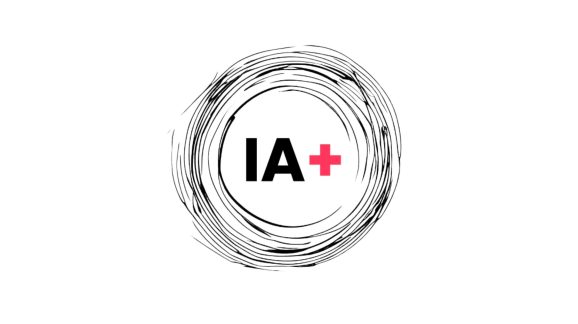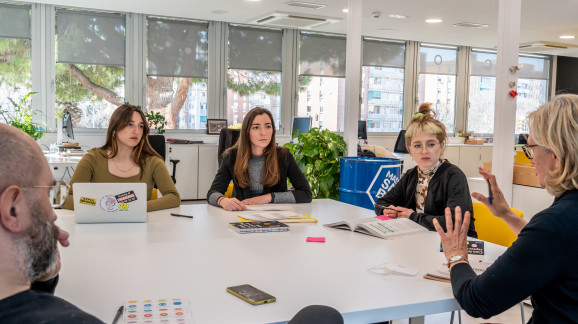In recent months, Coboi lab has joined the exploration and experimentation of the potential of new applications of artificial intelligence (AI). More specifically, in the testing of those applications that can benefit the day-to-day life of a public innovation laboratory.
The starting point for our testing were two of the most popular “chats” currently: ChatGPT (from OpenAI) and Bing (from Microsoft). We asked them the following question: “What free artificial intelligence applications could be useful for a public innovation lab ? ”
Thus, based on their respective responses, we obtained a first list of recommendations:
- AutoDraw : This free AI app belongs to a parent company of Google and allows you to draw easily and quickly.
- AIVA : Although the free version is limited, it is fully available for use.
- DALL-E : This app is another one of the most well-known along with ChatGPT.
- TensorFlow : An open source machine learning software platform that can be used to build neural network models. It is one of the most popular and used artificial intelligence tools in the world.
- Keras : A high-level machine learning library that runs on top of TensorFlow and allows you to quickly build neural network models.
- PyTorch : An open source machine learning platform used to create neural network models. It is very popular among researchers due to its ease of use and flexibility.
- Hugging Face : An open source machine learning library used to build natural language processing (PLN) models and to create chatbots.
- OpenCV : An open source library used to process images and videos. It is very popular in artificial vision applications.
- Caffe : An open source deep learning framework used to build neural network models. It is often used in machine vision applications.
- Python : It is very popular due to its ease of use and its wide range of automatic learning algorithms.
However, ChatGPT itself (after sharing its first list of “top apps”) invited us to specify which needs (of the labs) we wanted to “solve” with artificial intelligence applications, since currently the offer is already remarkable:
These are just some of the free artificial intelligence applications that can be useful for public innovation laboratories. There are many more tools and libraries available, depending on the specific needs of the laboratory
Precisely, this invitation to concreteness was also suggested to us by the expert Adriana Freitas , a specialist in impact strategies and exponential businesses, who also added a new reflection: not to assume that AI brings “new things”, but rather that it gives you a “return” (response, result, etc.) to a request that we must know how to limit (format, etc.).
It certainly seemed that “knowing how to ask” or “limit” was something to incorporate into our research. Thus, we focused on solving some of the most “basic” and constant operational needs in labs (and in many other ecosystems): reading, writing, designing and sharing knowledge. Furthermore, we established that these “testable” applications should meet some criteria (preferably):
- Free version that is quite useful and without bugs.
- Low learning/implementation cost.
- Usable from any browser, without requiring installation on the local computer.
Under these criteria we browsed the web, through AI application search engines, through the recommendations of the chats themselves, etc. and we tested some applications, which seemed to be gaining some legitimacy and that could solve our needs. Thus, from Coboi lab, we shared on social networks our experience with the following applications:
→ Deepl: translates texts, entire documents and complete web pages into the desired language, also indicating suggestions and alternatives according to the context of the overall writing. And with its extension for Google Chrome, it can translate any text we select from a web page live.
Link: https://www.deepl.com/
→ Mixo: an application that, based on a brief description of the idea that makes us write, creates a proposal for a name, logo and images to give a minimum identity to the idea. It does an amazing job of interpreting the idea, since it builds a landing page based on what the AI has understood (from your initial description) and creates texts and “claims” that specify the potential value proposition that the AI has detected in your idea.
Link: https://www.mixo.io
→ Canva: is a well-known design tool that has already incorporated some tools based on artificial intelligence. By accessing the “applications” section of the menu, and selecting the application called “text to image”, Canva will create an image from the text description you write. The resulting image can be used within any design we are making, and we can apply certain styles (for example, “photography type” or “drawing type”, etc.).
We value that it is a very easy application to understand and use, it is 100% free and no installation is necessary on the local computer.
Link: https://www.canva.com/
→ Bearly: it helps us summarize many of our readings, whether they are blog entries, publications in official bulletins, online reference sources… This application offers several functionalities (generation of creatives and texts, grammatical correction, etc.) but today we focus on its ability to summarize content. In Google Chrome: it allows you to summarize the contents of the web page you are viewing. In its desktop version: the functionalities are expanded and you can interact with its chat assistant (linked to #ChatGPT or #GPT-4).
Link: https://bearly.ai/
→ DALL.E: generates images from a written description. It is not free, as you need credits to generate your images. But we have found that the Bing image search engine (Microsoft search engine, #Google ‘s “competition” ) allows you to use DALL·E for free.
Link: https://openai.com/dall-e-2
→ Rask: translates a video into another language, using the own voice of the person(s) appearing in the video.
Link: https://es.rask.ai/
At Coboi lab we will continue experimenting with applications based on artificial intelligence as we want to continue participating in this innovation and be part of the great open debate about the future and the role of artificial intelligence in it.
Therefore, if you want to recommend an application to us, it will be a pleasure to test it.








